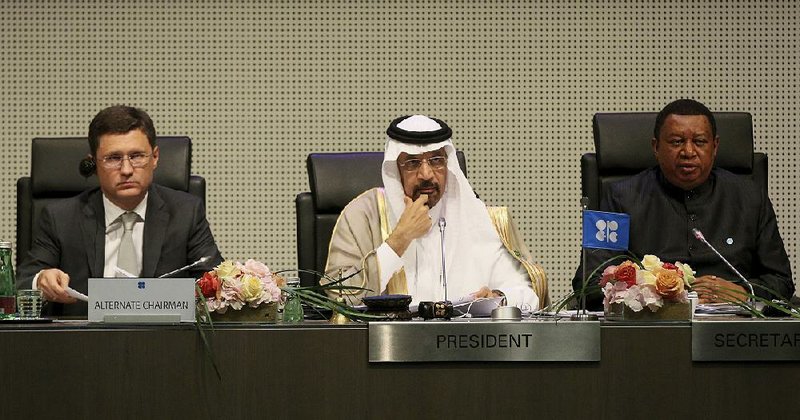VIENNA -- An alliance of many of the world's biggest oil-producing nations extended their agreement to cut output for an additional nine months, an effort to support prices that seems futile in the face of growing production from the U.S.
Thursday's decision by the 14-member OPEC cartel and 10 other countries led by Russia means that the reductions of 1.8 million barrels a day agreed on in November remain in place until March.
Saudi Oil Minister Khalid al-Falih, who presided over the meeting, said he expected the extension would reduce high crude inventories to a level corresponding to "the five-year average by the end of the year."
Less oil on the market normally means higher value per barrel. But any uptick in prices may be modest and temporary.
The alliance between OPEC and nonmembers faces competition from U.S. shale producers. Many have returned to the market since crude prices have risen from last year's lows to over $50 a barrel, and more are set to resume operations if crude prices go even higher.
That could increase supplies and push down prices again.
Investors seemed to focus on that reality Thursday, when they pushed the price of crude to levels seen before OPEC's meeting in November. The U.S. benchmark for crude fell $2.46 to settle at $48.90 a barrel on the New York Mercantile Exchange.
The upshot is that the price of oil -- and derived products like fuel -- is unlikely to increase much in coming months. That will be welcome news to consumers and energy-hungry businesses worldwide but could continue to strain the budgets of some of the more economically troubled oil-producing nations, such as Venezuela and Brazil.
The decision extends a cut of 1.2 million barrels a day by the Organization of the Petroleum Exporting Countries. Non-OPEC countries led by Russia chipped in with a further 600,000-barrel reduction.
"OPEC is being caught in a pincer movement of technology and policy that will, over time, erode oil use," said Bill Farren-Price, chief executive of Petroleum Policy Intelligence, an advisory firm for hedge funds and other investors. "This meeting is more about forestalling an oil price collapse than driving prices higher."
Oil prices that topped $100 a barrel as recently as 2014 may have helped plant the seeds that are now weakening OPEC.
Back then, U.S. companies took advantage of the high prices, learning to produce huge quantities of oil from shale rock in a process called hydraulic fracturing, or fracking. The technique, which involves extracting energy by drilling long horizontal wells and then loosening oil from the rock, has transformed the United States into a so-called swing producer, able to adjust production rapidly to match changes in the market.
But fracking has required substantial investment. When oil prices plummeted in 2015 and 2016, output from shale in the United States fell by about 900,000 barrels a day, equivalent to almost 1 percent of the global supply.
The U.S. shale industry today, however, is far more efficient. And unlike in previous years, it has an array of sources of capital to finance the drilling of new wells, including advance sales of oil, bank and private loans, and high-yield bonds.
The extension prolongs a rare period of collaboration between OPEC and some of its largest rivals, including Russia. The last time both sides worked together was 15 years ago, and the agreement fell apart soon after it began. The current accord encompasses countries that pump roughly 60 percent of the world's oil, but excludes major producers such as the U.S., China, Canada, Norway and Brazil.
Without details about what will happen beyond March, there's concern that OPEC could return to the free-for-all production that caused prices to slump from 2014 to 2016, though al-Falih has insisted that the organization will maintain control.
"We have said we will do whatever it takes," the minister said.
Information for this article was contributed by George Jahn and Kiyoko Metzler of The Associated Press, Stanley Reed of The New York Times and Nayla Razzouk, Golnar Motevalli and Laura Hurst of Bloomberg News.
Business on 05/26/2017
